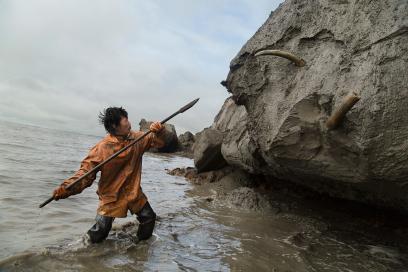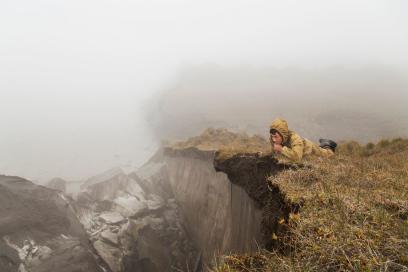The Russian Republic of Sakha in north-eastern Siberia, also known as Yakutia, is the setting to a story worthy of Jules Verne.
Due to global warming, the permafrost in the region is melting - a phenomenon with yet unknown geological and climactic consequences for the planet, but a fascinating window into the past for historians and biologists. The soil is releasing what it has been preserving for 4000 years: the remains of the woolly mammoth.
This has turned some of the population around the New Siberian Islands to a strange new source of income: they have become mammoth hunters. Like the American gold prospectors in the19th century, the hunters are facing tough conditions on their digs. They often spend months isolated on the islands. The rush on mammoth teeth is particularly popular in China. The material is processed skilfully and sold at exorbitant prices.
Evgenia Arbugaeva accompanied a group of mammoth hunters, trawling the icy Siberian tundra for up to 18 hours a day. Securing a tusk can take 24 hours of uninterrupted digging. The resulting photographs show surreal scenes: inevitably, the meeting of past and present carries a certain drama. But the stuff dreams are made of comes at a cost. The hunt demands severe sacrifices, separates families, leaves physical scars and pushes everyone involved to their limits. These traces of history are converted into new, material currencies. They secure livelihoods and give answers to scientific questions. Artisanal skills lend new shine to the ivory fossils. But sadly, the resurrection of their woolly ancestors offers no respite to living elephants: the demand for their tusks continues uninterrupted.
Text: A. Meyer / Clervaux - cité de l'image
English translation by N. Linden
Exhibition view





Photos © Christof Weber (CDI 2020)




